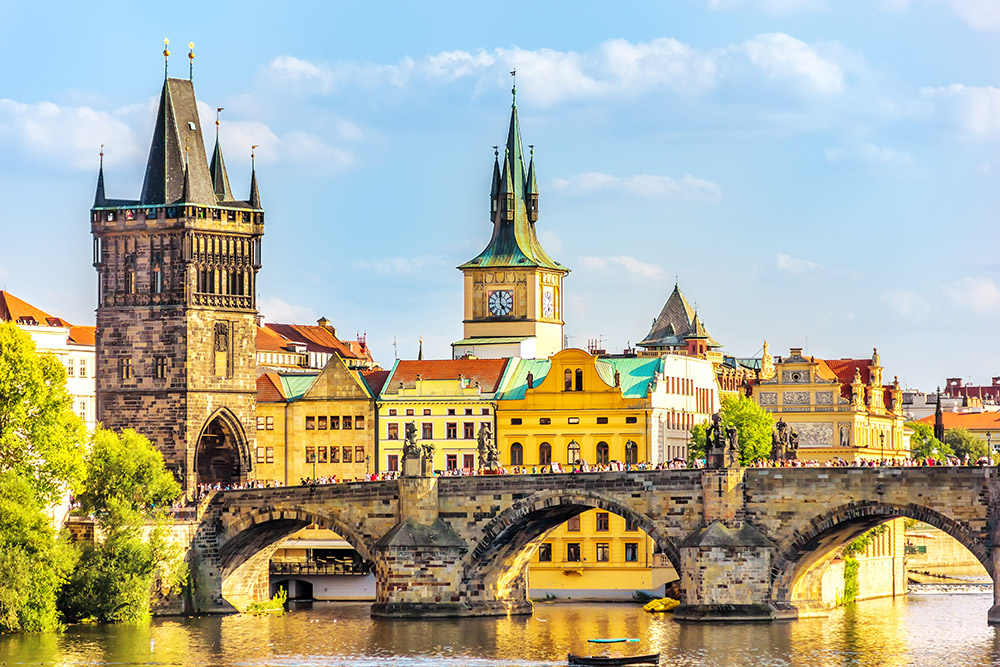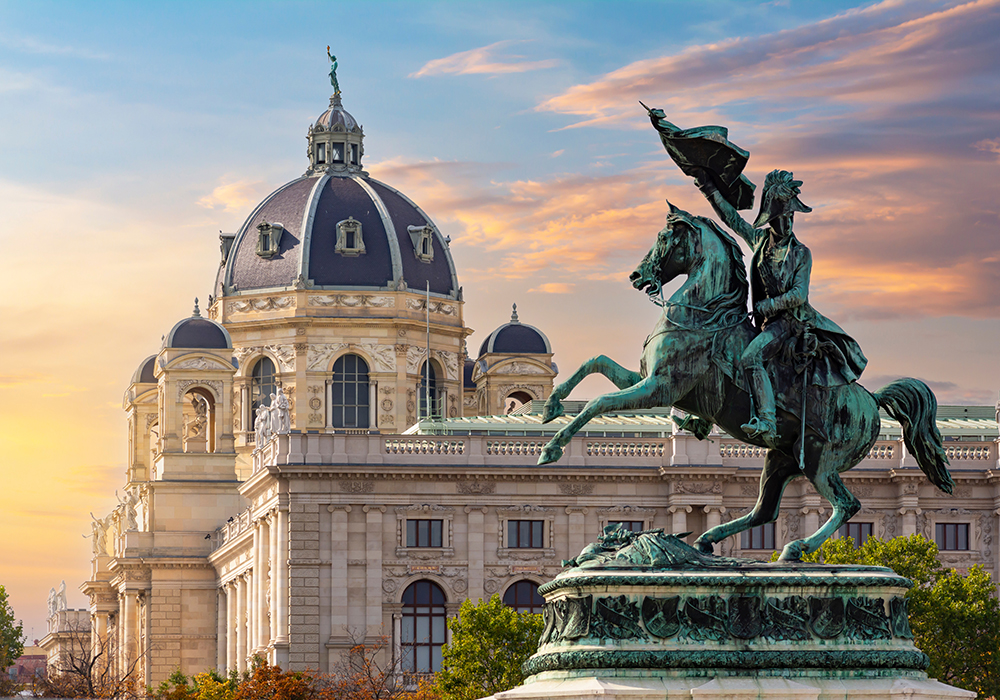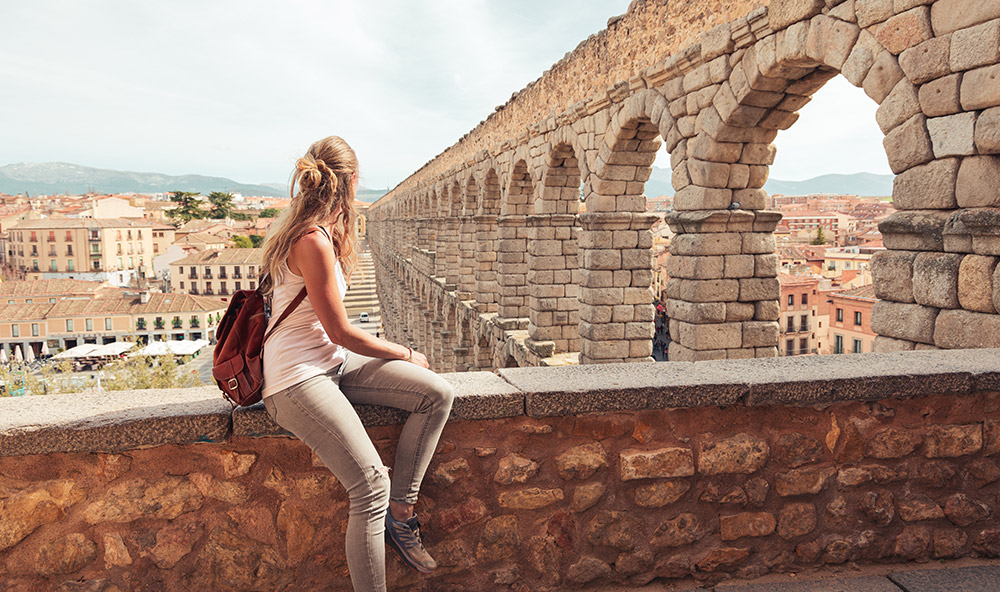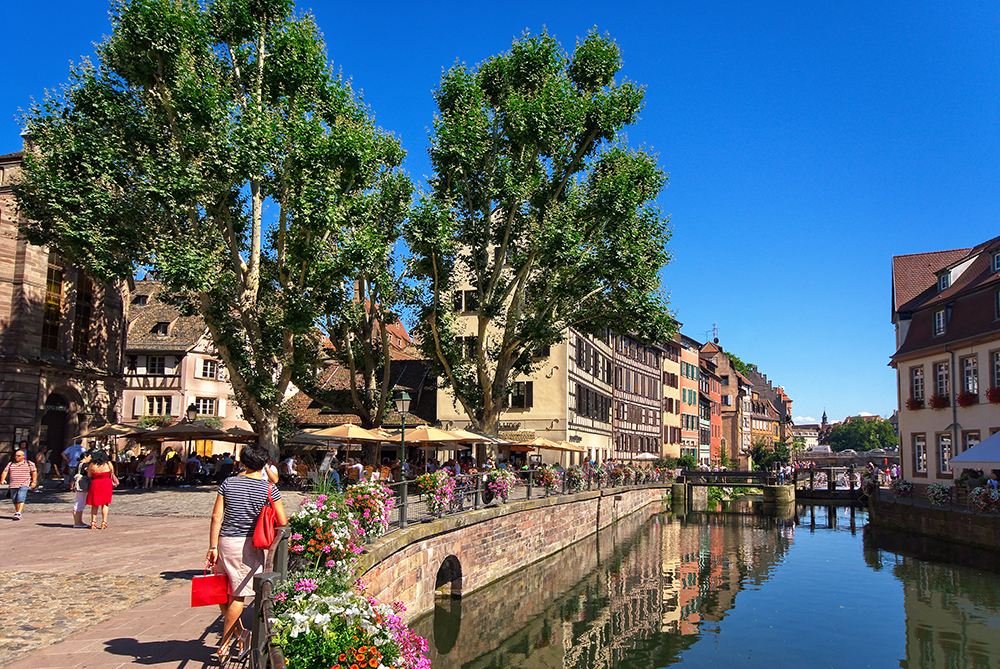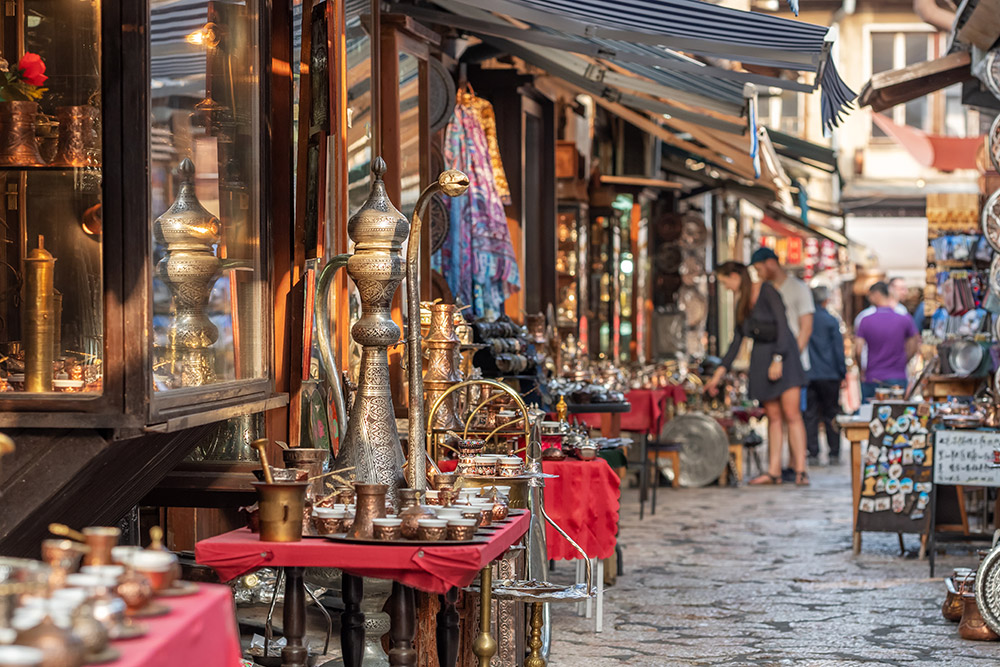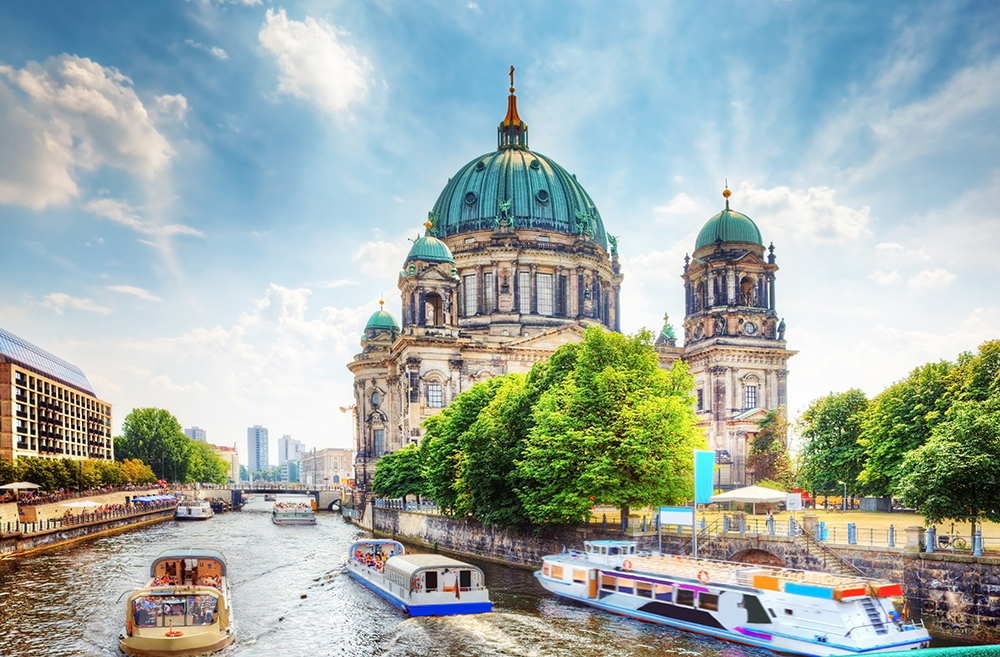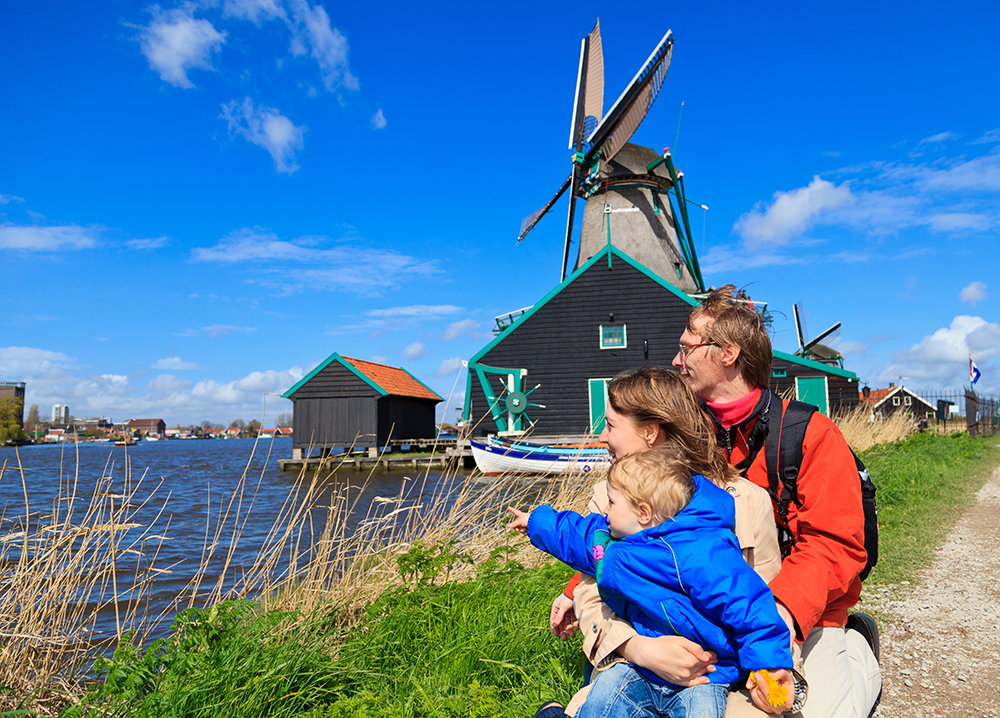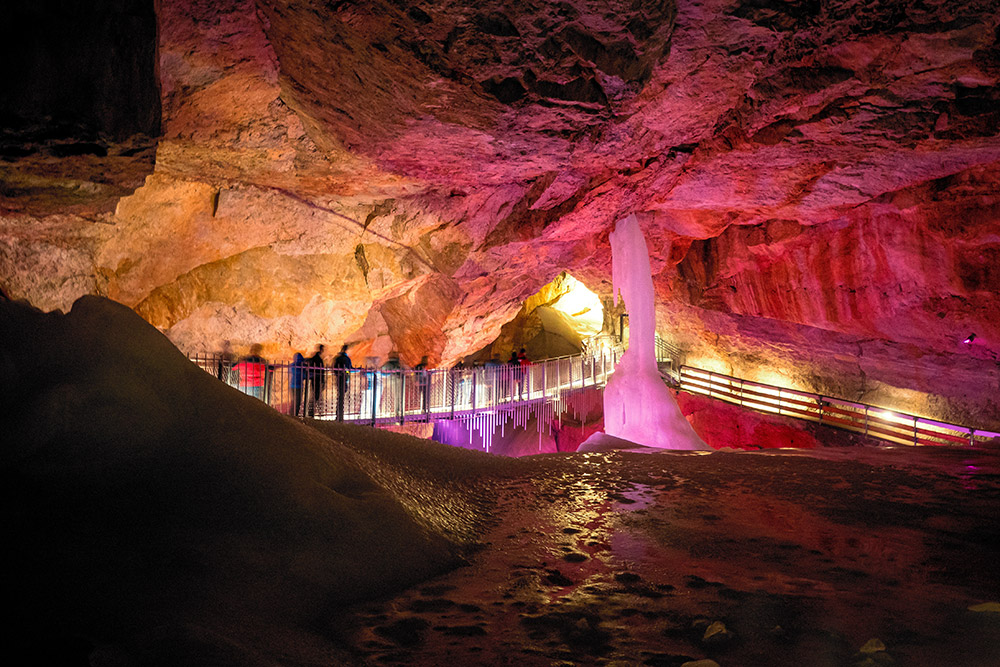Austria, Germany, Slovakia, and the Czech Republic
This delightful tour through four neighboring countries promises a diverse array of cultural experiences, with each destination revealing a unique chapter in the intricate tapestry of Central European history. Whether strolling through the bustling streets of Vienna, immersing in the medieval allure of Prague, indulging in the thermal springs of Karlovy Vary, or exploring the historical significance of Nuremberg, every location contributes to the richness of your travel experience.
Popular itinerary for Art and Culture Trip Across Central Europe:
In the majestic city of Vienna, the grandeur of palaces and the harmonious sounds of classical music create an atmosphere of timeless elegance. Crossing into Slovakia, Bratislava offers a captivating blend of medieval charm and modern vibrancy, providing a unique glimpse into Central European culture. Brno, a Czech city that blends historical charm with contemporary spirit, leads the way to the iconic Prague. Prague, with its legendary architecture, cobblestone streets, and the royal castle, invites you to step back in time. The renowned spa town of Karlovy Vary is home to healing thermal springs and elegant architecture against a picturesque backdrop.
Heading into Germany, the cities of Bayreuth, Bamberg, Regensburg, and Nuremberg exude the charm of medieval times, presenting architectural wonders and lively squares. The historic town of Regensburg is lovely and is renowned for the royal Walhalla monument, honoring Germanic mythology and historical figures. The picturesque town of Passau, situated at the confluence of three rivers, and the vibrant city of Linz, where contemporary art meets tradition, add a dynamic dimension to the journey. Crossing the scenic Wachau Valley, the magnificent Benedictine Melk Abbey and the historic town of Dürnstein, surrounded by vineyards and a historic fortress, enhance the beauty of the tour. This wonderful 9-day journey covers approximately 808 miles and concludes back in Vienna.
Day 1: Vienna
The historic district, known as Innere Stadt, is surrounded by the Ringstrasse, where notable public buildings like the Opera House, City Hall, and the classical Parliament building are situated.
The walking tour in the Old Town will begin at the 13th century Hofburg Imperial Palace, which once served as the residence of the Habsburg dynasty. The palace comprises 2,600 rooms, housing remarkable museums that exhibit collections of musical instruments, weaponry, and armor. These museums include the Ceremony Room, located within the National Library, and the Austrian Treasury, featuring imperial crowns, imperial living quarters, the silver collection, and Empress Elisabeth’s collection (the Sisi Collection).
Adjacent to the palace is the Spanish Riding School Vienna, the imperial school for horsemanship. St. Stephan’s Cathedral, erected in the 12th century, is one of the most important Gothic structures in Europe. It is well worth climbing the 343 steps that lead to the giant bell tower where you’ll find a breathtaking view of the city and the colorful rooftops. The interior of the cathedral, blending Gothic and Baroque styles, is stunning.
Vienna boasts numerous exceptional museums, including The Kunsthistorisches Museum, which exhibits masterpieces from the Middle Ages to the 19th century, featuring works by Johannes Vermeer, Raphael, and Titian. The Kunst Haus Wien is a museum dedicated to the life and works of the renowned Austrian artist Friedensreich Hundertwasser, showcasing a comprehensive collection of his paintings, graphics, and architectural designs known for their vibrant colors, spirals, and deviation from straight lines. The Belvedere Palace, composed of two Baroque-style palaces, houses the Museum of Austrian Art, featuring works by prominent Austrian artists such as Gustav Klimt, Egon Schiele, and Oskar Kokoschka.
The culinary landscape in Vienna is characterized by Viennese cuisine, featuring iconic dishes like the classic Wiener schnitzel served with lingonberry and mashed potatoes, Knoedel filled with various types of stuffing, and the traditional pancake known as Kaiserschmarrn, accompanied by applesauce, plums, or compote. Notable desserts include the famed chocolate cake with apricot jam filling, Sachertorte, and the delightful Esterhazy Torte.
Spend the night in Vienna.
Day 2: From Vienna through Bratislava to Brno
Follow Routes 4A and 6A for about 50 miles to reach the city of Bratislava. The walking tour will start at the 14th century Michael’s Gate, the only preserved gate from the city’s medieval fortifications. The route from the gate leads to Maximilian’s Fountain on a square adjacent to the Old Town Hall, featuring architectural elements from various periods. The museum within the Old Town Hall displays medieval torture devices, authentic artifacts, and the famous Golden Hat. The tower of the Old Town Hall provides a delightful view of the old city.
Exiting the grand courtyard through the passage, you’ll arrive at Primacial Palace, an architectural gem from the late 18th century that hosted dignitaries and witnessed historical events such as the signing of the Treaty of Pressburg between Austria and France. St. Martin’s Cathedral, showcasing stunning Gothic architecture, reflects the religious and royal heritage of the city. Near the theater, there are several transportation options that lead to the 9th century Bratislava Castle, a symbol of Slovakia’s history. The fortress is strategically located, overlooking the Danube River. The gardens around the palace are well-maintained, and its rooms allow for an in-depth exploration of Slovakia’s history and heritage.
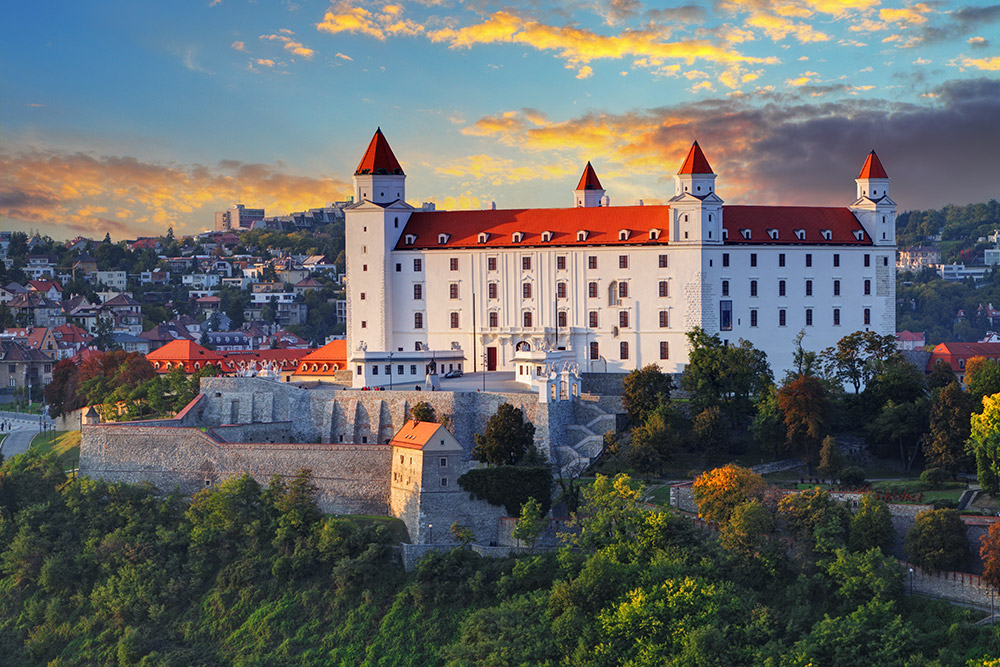
Following the tour in Bratislava, the journey continues for about 80 miles along Route 2D to reach the city of Brno in the South Moravian Region of the Czech Republic. Brno is known for its impressive architecture, cultural richness, and vibrant atmosphere. The historical heart of the city includes Špilberk Castle, a vast fortress transformed into a museum that provides insights into Brno’s medieval history and serves as a symbol of the city’s resilience. St. Peter and Paul Cathedral, a masterpiece of Gothic and Baroque styles, adorns the city skyline, providing a panoramic view of the city.
As the sun sets, Brno’s nightlife comes to life, offering a variety of bars, clubs, and music venues. The city’s culinary scene is equally diverse, featuring traditional Czech cuisine alongside international flavors.
Spend the night in Brno.
Day 3: From Brno to Prague
This morning, follow Route 50E for approximately 124 miles to reach the city of Prague. As you wander through its streets, iconic sites constructed from the 14th century onward come to life. These landmarks include Charles University (the oldest in Europe), Prague Castle, and the magnificent Charles Bridge – an architectural marvel spanning the Vltava River for over 600 years, adorned with statues of 30 saints. The City Hall and the Astronomical Clock are focal points for tourists, not only for their beauty but also for the panoramic view of the ancient buildings surrounding the City Hall Square. Constructed in the 14th century as the seat of the city’s rulers, the City Hall features a Gothic tower with an astronomical clock. On the square’s edge stands the Church of Our Lady before Týn (Kostel Matky Boží před Týnem), an impressive structure with multiple spires, symbolizing one of the city’s landmarks. The original architecture dates back to the 14th century, but its spires were restored.
The winding streets of the old town, blending various styles from the Renaissance, Baroque, and Art Nouveau periods, also lead to the Old Jewish Quarter of Prague. Synagogues, the Old Cemetery, and the legend of the “Golem” of Prague tell the story of the thriving Jewish community that has endured here for generations. Art Nouveau enthusiasts are encouraged to explore the impressive museum housing the works of the artist Alphonse Mucha.
Spend the night in Prague.
Day 4: From Prague to Karlovy Vary
Drive along Routes 6 and 48E for approximately 75 miles to reach Karlovy Vary. Situated amidst hills and lush forests, this picturesque spa town provides an authentic experience for visitors seeking rejuvenation in its thermal springs, celebrated for their healing mineral-rich waters. The town’s graceful architecture and enchanting streets complement the soothing atmosphere. Utilizing traditional ceramic cups that feature a characteristic sipping gesture, you can taste the diverse mineral-rich spring waters. Karlovy Vary is a city that encourages leisurely strolls through its charming streets and squares, allowing you to immerse yourself in one of its refined spa centers.
Spend the night in Karlovy Vary.
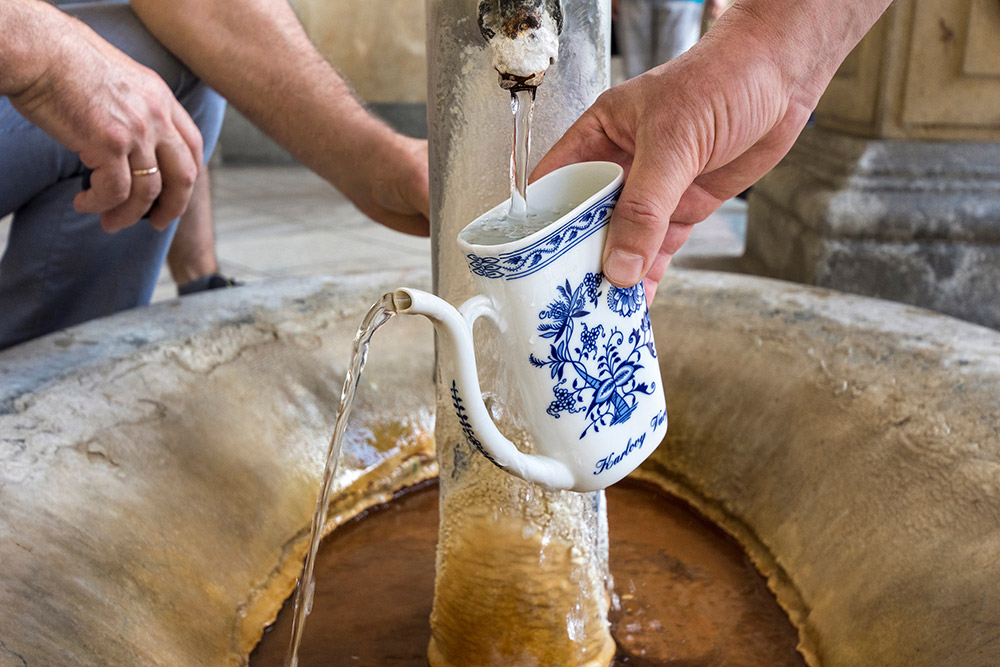
Day 5: From Karlovy Vary through Bayreuth via Bamberg to Nuremberg
This morning’s route will take you along Routes 48E and 93A for approximately 125 miles to reach Bamberg. On the way, we recommend a stop in the culturally and historically rich city of Bayreuth. A visit to the Opera House, a UNESCO heritage site designed in the Rococo style, is a must. Guided tours (please check schedules in advance) provide an opportunity to marvel at the impressive Rococo decorations, and the hall, renowned for its remarkable acoustics, hosts an annual festival that attracts music enthusiasts from around the world.
Continuing on Route 70A, you’ll reach Bamberg. Its old town is a UNESCO World Heritage site, known for its medieval architecture and well-preserved historical buildings. You’ll visit the Old Town Hall (Altes Rathaus), adorned with wall paintings, one of the city’s most iconic landmarks. Located on a small island in the Regnitz River, accessible by bridge, it showcases Renaissance architecture. A short climb will take you to the Old Court (Alte Hofhaltung), a former residence of Bamberg’s prince-bishops exhibiting beautiful Gothic architecture.
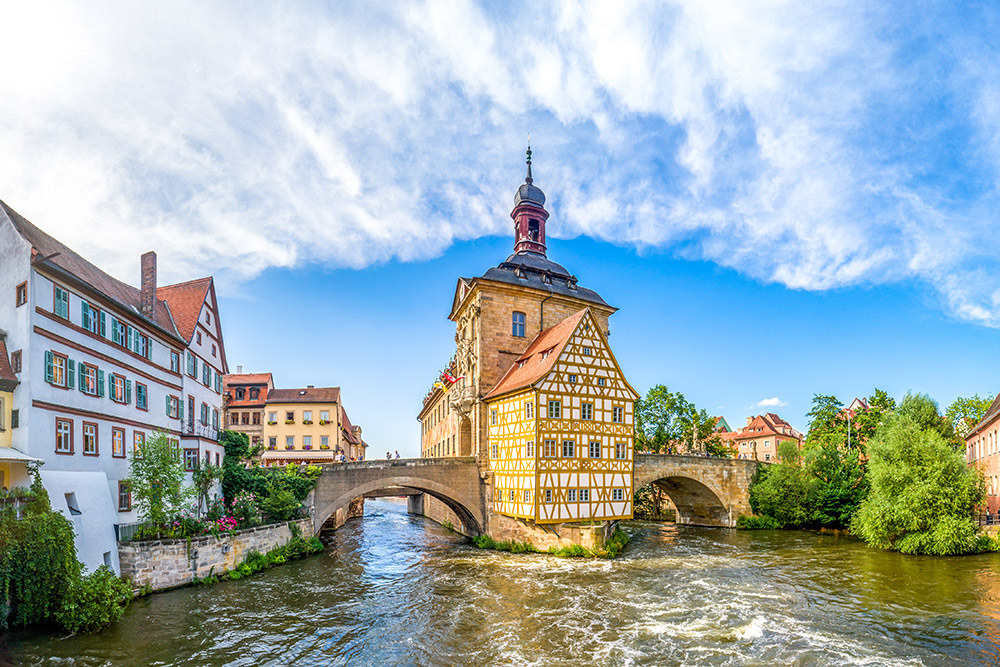
The nearby cathedral is an impressive example of Romanesque architecture dating back to the 11th and 12th centuries, featuring significant graves, sacred artifacts, stone-carved sarcophagi, mural paintings, and stained glass windows. Surrounded by three remarkable buildings, it reflects over a thousand years of the city’s history.
Returning to the Old Town, explore “Little Venice,” a charming ensemble of buildings lining the Regnitz River banks, and one of the city’s most popular tourist destinations. Bamberg’s traditional breweries are renowned, and there are tours available to learn about the brewing process and to sample some of the local offerings.
From Bamberg, travel on Route 73A for about 40 miles to reach Nuremberg. Spend the night in Nurnberg.
Day 6: Nuremberg
The tour begins in the elevated part of the city at the Kaiserburg Nuremberg, an impressive fortress that dates back to the Holy Roman Empire, where imperial assemblies were held since 1356. The central round tower, Sinwell Tower, built nearly 700 years ago, offers a fantastic panoramic view of the city. The deep well attests to the builders’ prowess. The Kemenate, part of the castle museum and an extension of the German National Museum, displays archaeological finds, weapon collections, armor, and artworks, offering insights into the site’s rich history.
Descending into the city, the next stop is the residence of Albrecht Dürer, a German Renaissance polymath. His impressive half-timbered house, now a museum, showcases his life, works, and tools, standing as one of Nuremberg’s few surviving structures from its golden age. Fraukirche, a 14th-century Gothic-Renaissance church, graces the square with its multi-peaked gable and an artistic clock from 1509. Facing the central square, it hosts periodic markets and features the Schöner Brunnen fountain, a late 14th century Gothic spire adorned with water-spouting figures, standing tall at about 65 feet.
The Documentation Centre at the Nazi Party Rally Grounds documents and illustrates events and rallies that took place in the city, which was a central hub for the party. The Congress Hall, whose construction was never completed, was intended to accommodate 80,000 seats. The courthouse where the Nuremberg Trials took place is a chilling testament to those dark days.
For beer enthusiasts, the local Altstadthof beer is highly recommended, and the perfect complement to the beer is Nuremberg’s traditional sausages, the Nürnberger Rostbratwurst, whose recipe dates back to the 14th century, making it as a beloved local delicacy.
After the city tour, take Route 3 for just over 70 miles to reach Regensburg. Spend the night in Regensburg.
Day 7: From Regensburg through Walhalla to Passau and Linz
Regensburg, situated on a bend of the Danube River where it meets the Naab River, is home to many well-preserved medieval structures and sites. This charming and tranquil city offers a wide range of attractions and activities, including museums, historical sites, and delicious food and drinks.
Start your tour at the Alte Steineren Brucke, an ancient stone bridge known as a medieval engineering marvel. This bridge, with a history dating back almost 900 years, was once the only connection between the banks of the Danube, linking Vienna and Ulm. The bridge leads to St. Peter’s Cathedral (St. Peter Dom), an outstanding example of 13th century Gothic architecture. The cathedral, visible from a distance, boasts impressive nave-transept architecture, a beautifully adorned choir balcony, and a high altar. The colorful curtains date back to the 13th and 14th centuries. Passing by the Old Town Hall (Altes Rathaus) and heading to Haidplatz Square, you’ll see the city’s beautiful architecture, with well-preserved medieval buildings.
Regensburg is also famous for its sausages, the Regensburger, made from a blend of pork and beef and seasoned with a variety of spices. They are usually served with sauerkraut and potatoes.
Continue about 7 miles from Regensburg to the Walhalla temple. Situated on the slopes of the hill, this grand structure, influenced by the Parthenon in Athens, was inaugurated by King Ludwig I in 1842. Along the interior walls are sculptures of ‘Walhalla Companions,’ chosen by Ludwig I and considered exemplary figures of Germany. The view of the Danube from here is breathtaking.
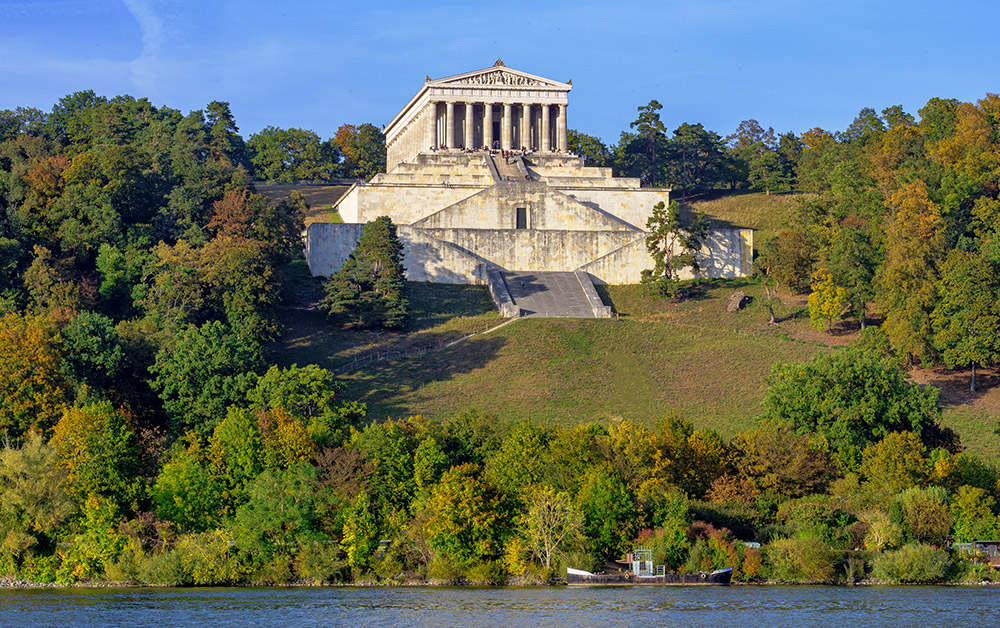
From Walhalla, travel on Route 3A for about 68 miles to the city of Passau, located at the confluence of three rivers: the Danube, the Inn, and the Ilz. The Old Town is a labyrinth of narrow, winding streets and charming squares surrounded by medieval and baroque architecture. Climb to St. Stephen’s Cathedral, an impressive Baroque structure built in the 17th century. This cathedral, one of the largest in Germany, is known for its massive organ with thousands of pipes, considered one of the largest organs in the world. A Baroque art masterpiece adorns the ceiling above the choir, depicting the martyrdom of Saint Stephen.
Perched above the city on the opposite bank lies the medieval fortress Veste Oberhaus. Built originally as a 13th century defensive fortress, it was later used as a residence for Passau’s bishops and then as a prison. Today, it is a local history museum that offers panoramic views of Passau and the surrounding countryside, along with exhibitions on the fortress and the city’s history.
Continue on Route 3A for about 50 miles to the city of Linz. Spend the night in Linz.
Day 8: From Linz to Melk
Today will be dedicated to exploring the city of Linz. Its main street stretches from the Nibelungen Brucke (Bridge) to the theater near the train station. Almost adjacent to the bridge is the impressive central square, with a white Trinity Column standing in front of the Old Town Hall (Altes Rathaus). The Trinity Column, soaring to a height of approximately 65 feet, was designed in the Baroque style in 1716 as a thanksgiving monument for the city’s resilience during the plague. At the top of the column stands the statue of Santa Maria Immaculata. Adjacent to it, on the top balcony of the Feichtinger-Haus, are 19 bells playing snippets of music by Austrian composers three times a day, each lasting 4 minutes.
The Old Cathedral of Linz, built in the 17th century in Baroque style, contains impressive elements such as the altar, pulpit, and the massive organ. Climbing the bell tower to about 213 feet, you’ll find breathtaking panoramic views of the city. Evening concerts and music events are held regularly in the cathedral throughout the year.
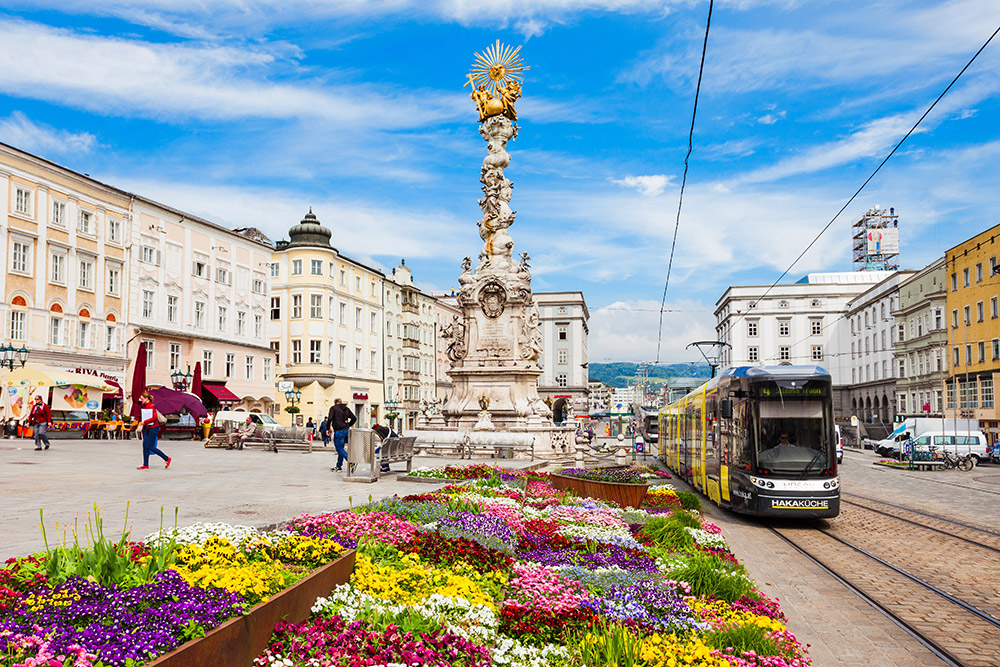
Mozart stayed in Linz and composed the Linz Symphony during his stay. A memorial statue dedicated to him can be found near the residence on Altstadt Street, close to the central square. Press the button to hear the Linz Symphony.
Be sure to sample the local specialty, Linzer Torte. This flat cake has strips of dough forming a lattice on top, and it is filled with nuts or almonds and a thin layer of cherry or forest fruit jam. Another sweet delicacy is Linzer cookies, known as “Linzer Augen,” available in round, square, or star-shaped varieties, each containing a delightful jam filling.
Leaving Linz, travel on Route 1A for about 62 miles to the city of Melk. The first stop will be Melk Abbey, a Benedictine monastery founded in 1089 by Leopold II, Margrave of Austria. The abbey, an imposing Baroque-style structure overlooking the Danube River, quickly became one of the most important cultural and educational centers in the region. Guided tours provide access to the abbey’s treasures, impressive rooms with wall and ceiling paintings, and the ancient library housing over 90,000 items, many from medieval times. In the 18th and 19th centuries, the abbey played a significant role in Austria’s cultural and intellectual life, with prominent figures like Goethe, Mozart, and Haydn visiting or residing there. The abbey is now a UNESCO World Heritage site and is open to visitors year-round. After the abbey tour, stroll through the lively town, filled with vibrant shops, cafes, and restaurants.
Spend the night in Melk.
Day 9: From Melk through Dürnstein to Vienna
Depart from Melk on Route 33, covering a distance of about 18 miles to Dürnstein, a charming town situated along the banks of the Danube River. Dürnstein is renowned for its imposing castle where Richard the Lionheart, the English king, was imprisoned during the late 12th century. Access to the castle and the breathtaking view it offers is possible only by foot. The historic town of Dürnstein is small and picturesque, adorned with colorful houses and flowers. Its lively shopping street features shops, local cafes, and wine taverns offering the renowned wines of the region, especially Grüner Veltliner and Riesling varieties. The town is also famous for its apricot delicacies, utilizing the abundant apricot orchards in the Wachau Valley. You can indulge in various forms of this fruit, from fresh produce to jams and liqueurs.
After exploring Dürnstein, drive approximately 50 miles to return to the Austrian capital, Vienna.


